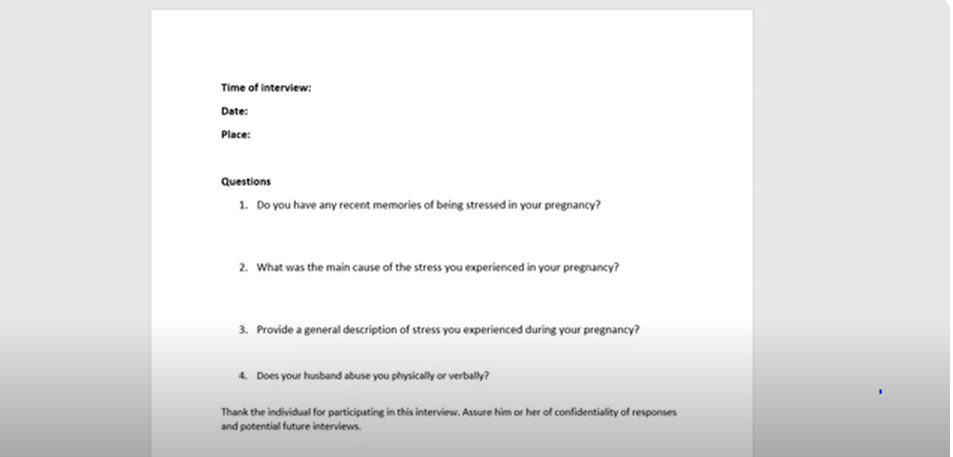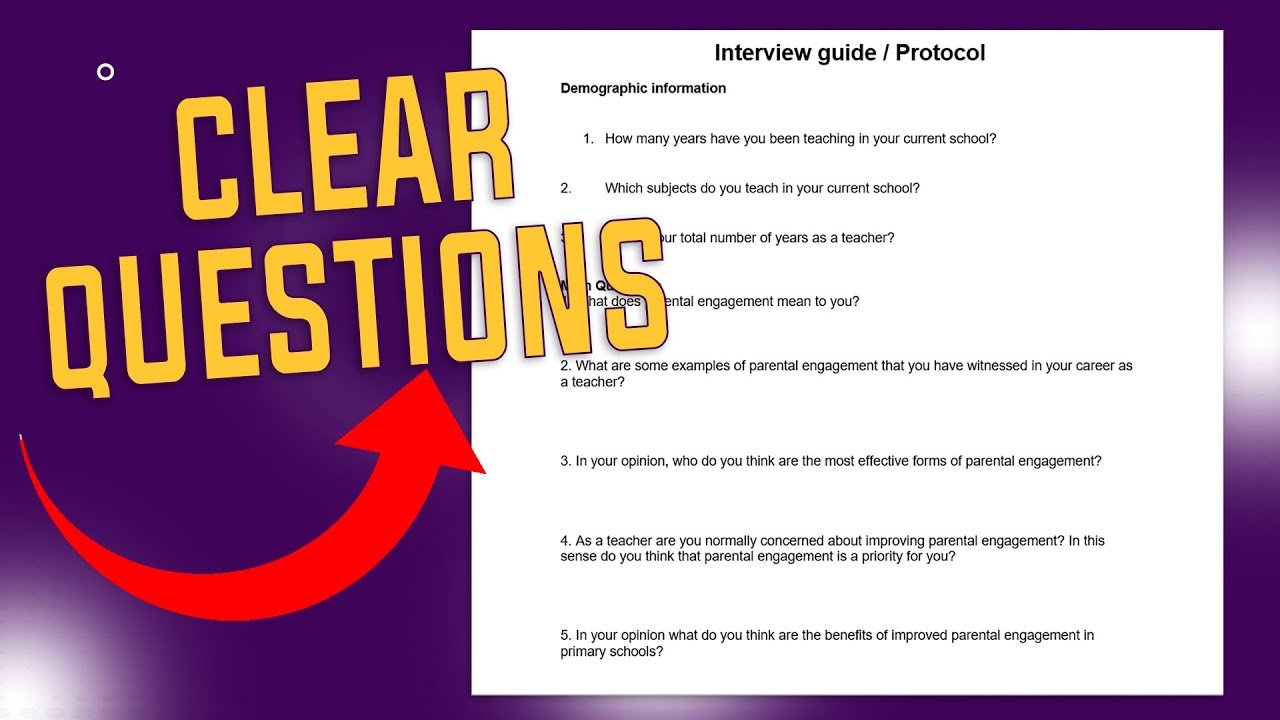Tips For Conducting The Best Interviews In Qualitative Research
Interviews are central to the qualitative research process.
An interview is a social interaction that will be based on a conversation related to a given topic.
During an interview knowledge will be constructed as the interviewer interacts with the interviewee.
The quality of interviews will determine the quality of the overall qualitative research process.
Here are some tips you can follow to prepare for and conduct the best interviews in qualitative research.
Tip #1

Determine the research questions that will be answered by the interviews. The research questions should be focused on understanding the central phenomenon in your study.
For example, a study titled Causes of depression among pregnant women living in low-income urban areas.

The main research questions can be :
- What are the main causes of depression among pregnant women living in low-income areas?
- What are the effects of depression among pregnant mothers?
Tip #2

After clearly determining the research question that will be answered in the interviews, design an interview guide or an interview protocol.
Brinkmann & Kvale, (2015) suggest asking approximately 5 to 7 open-ended questions to your target interviewees.
However, I think that you can ask more questions but bear in mind that the more questions you ask the more data you have and the more complex your study becomes.
So the idea is to ask the minimum questions that will help you find answers for your research questions.
Here is an example of an interview guide that we can use for the study titled Causes of depression among pregnant women living in low-income urban areas.

Example Interview Guide
Tip #3

Identify the best group of individuals that you can interview and who can best answer the questions.
Mostly in qualitative research, we use purposeful sampling.
There are numerous purposeful sampling strategies you can consider such as:
- Recruiting interviewees based on maximum variation. This means that you consider a diverse variation of individuals to enrich the responses.
- You can also consider respondents that show a maximum variation of given characteristics.
- You can also decide to adopt a homogeneous way of recruiting interviewees which focuses on specific similar characteristics between the participants during recruitment.
- Purposeful sampling can also be done through the snowball or chain method.
- This would entail finding an interviewee and then asking them whether they know of any other individuals who may provide rich information related to the subject of interest.
- The chain of asking interviews to refer others continues until the interviewer is satisfied with the number of participants in the study.
- A researcher can also rely on a random purposeful sampling strategy which may add credibility to their sample especially when they have a large population to study.
- Sampling can also include the use of a criterion to ensure that the chosen cases meet a given specified criterion.
- Convenience sampling is also a common sampling strategy.
- Convenience sampling therefore includes recruiting participants conveniently.
- This can help save money, time, and effort but may affect the credibility of the collected information.
Tip #4

Determine the type of interview that will be most appropriate for your study.
The type of interview that a researcher chooses to conduct will be mainly determined by the interactions that will provide the most useful information that can answer the research questions.
Examples of interviews include one-on-one interviews in which both the interviewer and interviewee meet physically in the same room.
A one-on-one interview can also occur through the use of technology such as Google Meet, Microsoft Teams, or Zoom.
A one-on-one interview can also occur through a talk between the interviewer and interviewee over the phone. One-on-one interviews can also occur through text messages or online chat.
Tip #5

Obtain consent from the interviewees to participate in your study, especially through the completion of the consent forms.
Tip #6

Locate distraction-free places to conduct interviews, especially for one-on-one physical interviews.
Tip #7

Conduct pilot testing interviews which will help you to refine your interview questions and procedures.
Pilot testing is important to the refinement and development of research instruments such as helping researchers to frame their questions better, observe any form of biases collected in the information, and adapt the most effective research procedures.
Through pilot testing, a researcher is able to refine their data collection plan and develop the right questions.
A researcher should recruit participants for the pilot study on the basis of geographic proximity, access, and convenience.
Tip #8

Record your interviews using the right tools whether such interviews are focus groups or one-on-one.
For example, you can use good microphones that allow you to capture the audio effectively or lapel microphones.
In the present day, you can even use tools such as Otter AI to do an accurate live recording and transcription of your interviews.
I will link a video where you can watch how you can use AI such as Otter AI to do live transcription of your interviews as you record them.
Tip # 9

Follow good interviewing practices such as:
- Staying within the study boundaries and not going off-topic.
- Relying on the interview protocol to guide the interview questions.
- Trying to memorize the questions in the protocol so as not to lose eye contact with participants.
- Working to provide an adequate transition from one question to another during an interview
- Completing interviews within the specified time periods.
- Being courteous, and respectful.
- Be a good listener and avoid interrupting interviewees when they are speaking during an interview.


